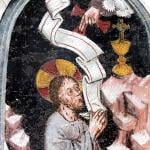Growing up in church, the Pharisees have always been the bad guys of the New Testament, and it’s easy to assume that they were these evil, manipulative, diabolical agents of doom hell-bent on corrupting the world. They opposed Jesus so they must be evil, right? They were like the Klingons in the Star Trek universe, agents of evil with no redeeming qualities. And Christians would never be like Pharisees today, would we? I mean, we’re not evil! But when we began to humanize them, we can began to see an uncomfortable amount of ourselves in them, and if we’ve struggled with anything as evangelicals, it’s been our tendency to be a little Pharisaical in our approach to Christianity. So, let’s find out a little more about our favorite villains in the New Testament.
The origin of the Pharisees starts around 160 BC, which is 160 years before Jesus of Nazareth was born. Rome had not risen yet to conquer the world, but Alexander the Great of Greece had conquered the Western world and after his death his empire got carved up into four kingdoms. Israel was situated between two of them and they became pawns in the greater geopolitics of the day. During that time there was a famous Jewish revolt led by the Maccabees that briefly gave Israel independence from the world powers. That didn’t last long, and within a few years they were back under the thumb of foreign powers. That’s when the two parties we see in New Testament (Pharisees and Sadducees) began to arise.
The Sadducees were centered in Jerusalem, they controlled the temple, and they had a more liberal interpretation of Jewish law. Basically, if Moses didn’t expressly forbid something, then it was okay to do. Moses never expressly forbade cooperating with the Greeks or Egyptians or later the Romans, so they were willing partners with them. Many accused them of selling out, of comprising their Scriptures to justify their hold on power, of becoming too liberal. But the Sadducees kept their power and kept control of the temple.
The opposition rose from some champions of the people, from the working class, from the good ole small town conservative values that drove the majority of the Jews. This was the party of the Pharisees. They held a strong line against compromise and collaboration with the foreign powers. They saw through the blatant power and money grab of the Sadducees and wanted to stand up for the conservative values of the people and adherence to the Scriptures.
The Pharisees had a different approach to the Law, expanding it, commenting on it, applying it to current social situations and modernizing it for the people. Over time, this oral tradition, the interpretation by the Pharisees, became just as authoritative as the Law itself, and that’s where they ran into conflict with Jesus, not because Jesus was breaking the Old Testament Law, but because he was departing from their interpretation of it.
Instead of the temple in Jerusalem, the Pharisees organized the people in synagogues, smaller houses of worship all throughout the country where people could gather together and read Scripture together. When Jesus announced himself as the fulfillment of the Old Testament prophecies, he did so not in the temple but in a synagogue.
At the end of the day, they weren’t all bad guys. They started very well intentioned. They were champions of the people, they tried to bring the people back to obedience to the Scriptures, they tried to resist the growing secularization of their country by the Roman Empire. I think we might have identified with many of them and liked many of them.
So what’s the point in this history lesson? When we read of Jesus’ conflict with the Pharisees (especially in the Gospel of Matthew), we need to ensure that those Pharisaical tendencies don’t infect our hearts and our churches today.













